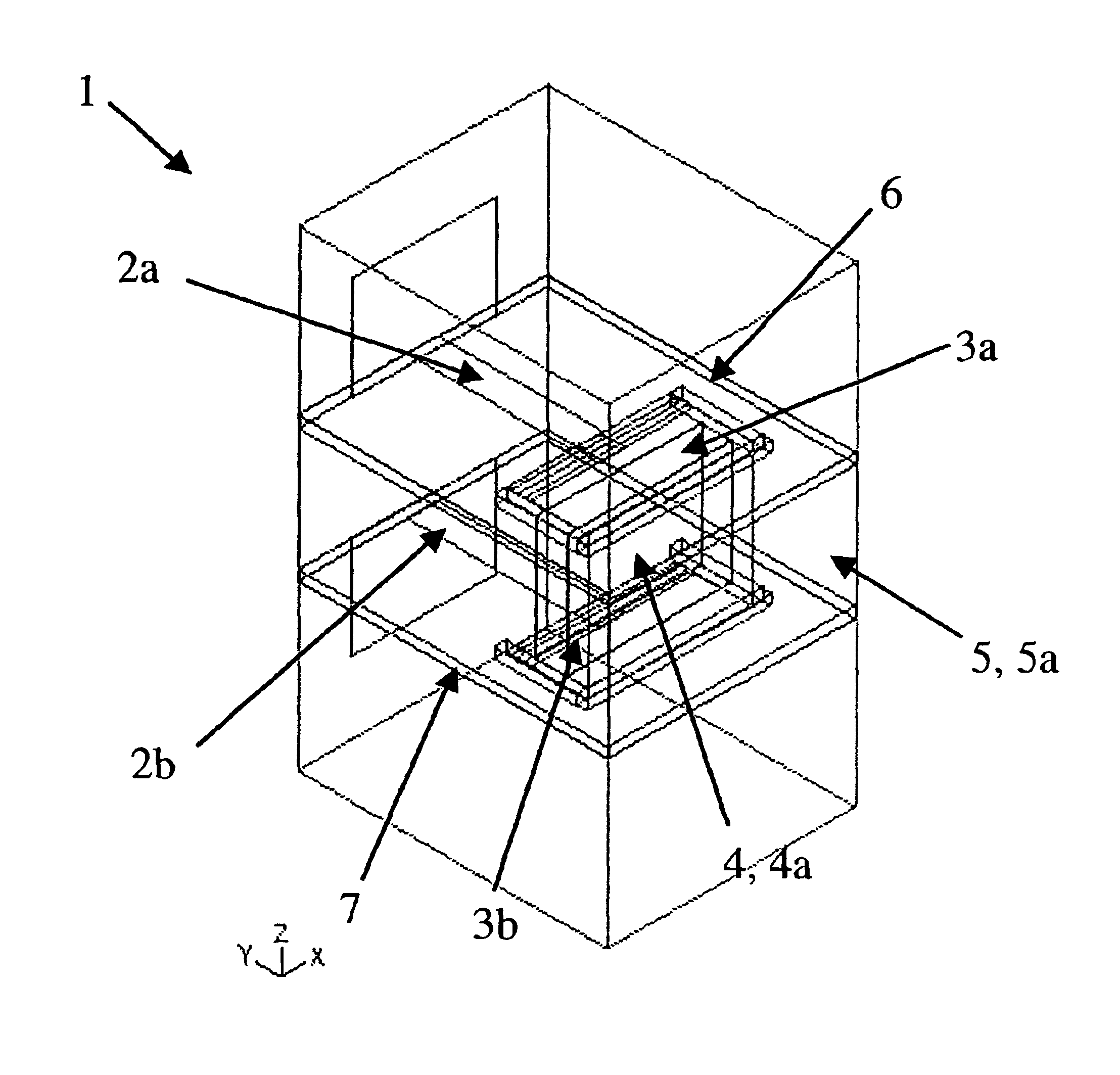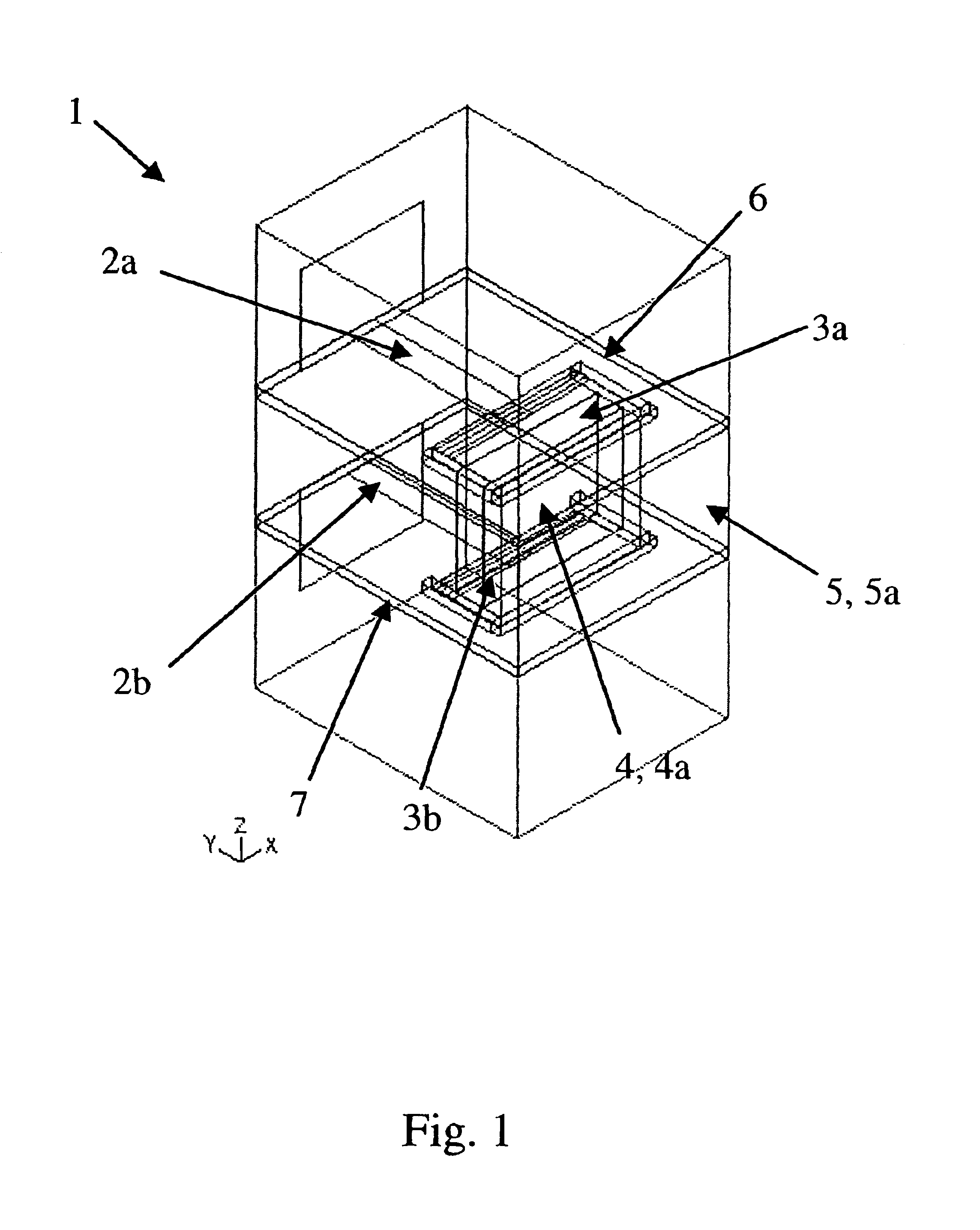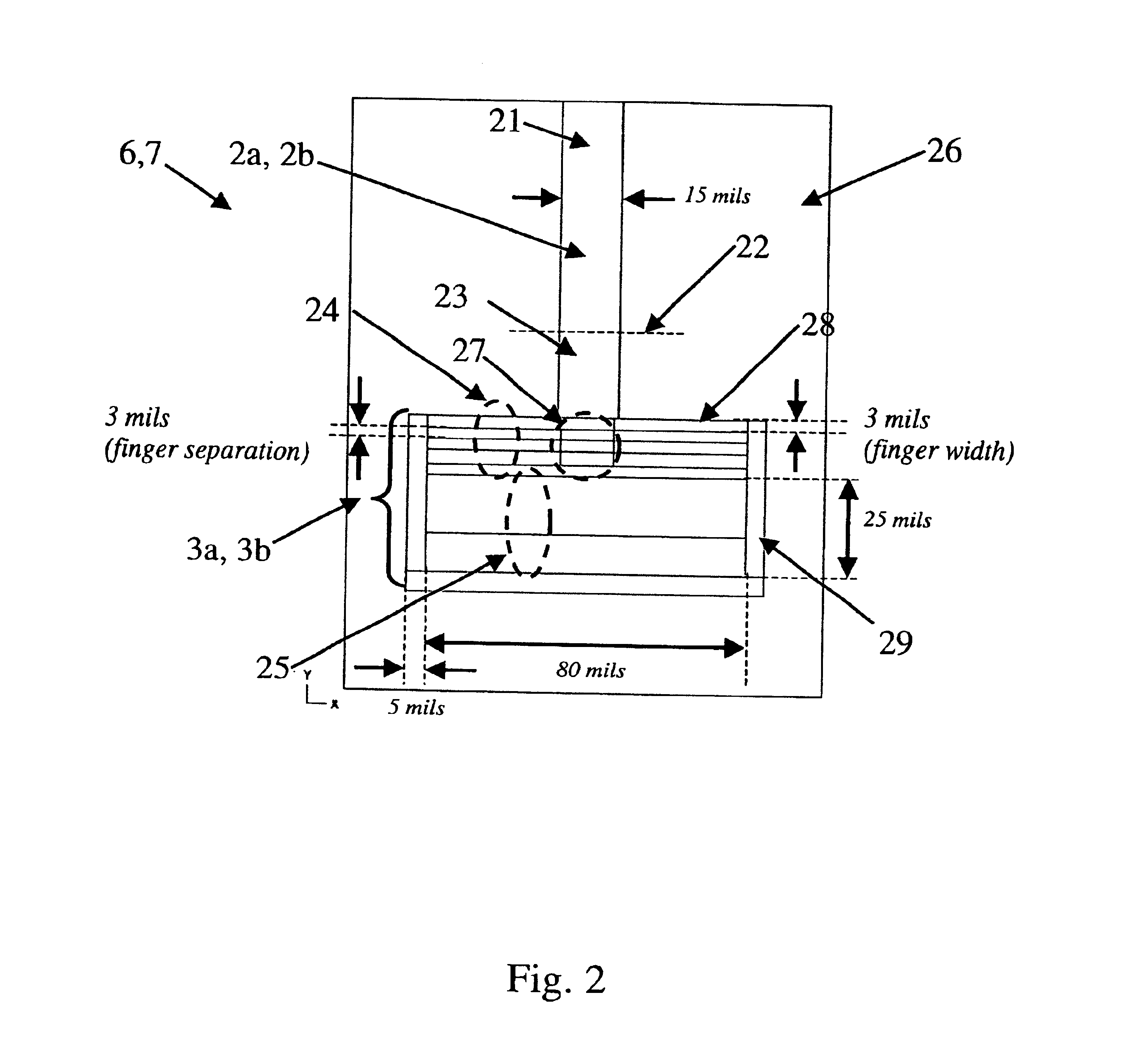Millimeter-wave signal transmission device
a transmission device and millimeter-wave technology, applied in the direction of waveguides, electrical devices, multiple-port networks, etc., can solve the problems of difficulty in transmitting mm-wave signals, limited distance over which signals may be communicatively connected to parallel transmission lines, etc., and achieve the effect of large distances between circuits and efficiency
- Summary
- Abstract
- Description
- Claims
- Application Information
AI Technical Summary
Benefits of technology
Problems solved by technology
Method used
Image
Examples
Embodiment Construction
[0017]Referring to FIG. 1, a preferred embodiment of the signal transition 1 of the present invention is shown. As used herein, the term “transition” refers to any device either integral, integrally-molded or an assembly of discrete components which is used to transmit a mm-wave signal from one transverse plane to another one. As used herein, the term “mm-wave signal” refers to a high-frequency electrical signal which may be propagating in a number of different forms, including, for example, in a transverse electromagnetic (TEM) mode or in a waveguide mode. As used herein, the term “TEM mode” refers collectively to both a true TEM pattern and a quasi-TEM pattern. The concepts of TEM, quasi-TEM, and hollow waveguide fields are well known and will not be addressed specifically herein. Suffice it to say though, that in a true TEM mode the electrical field, the magnetic field and the direction of wave travel are all orthogonal to each other, while in a quasi-TEM mode, the electrical fie...
PUM
 Login to View More
Login to View More Abstract
Description
Claims
Application Information
 Login to View More
Login to View More - R&D
- Intellectual Property
- Life Sciences
- Materials
- Tech Scout
- Unparalleled Data Quality
- Higher Quality Content
- 60% Fewer Hallucinations
Browse by: Latest US Patents, China's latest patents, Technical Efficacy Thesaurus, Application Domain, Technology Topic, Popular Technical Reports.
© 2025 PatSnap. All rights reserved.Legal|Privacy policy|Modern Slavery Act Transparency Statement|Sitemap|About US| Contact US: help@patsnap.com



